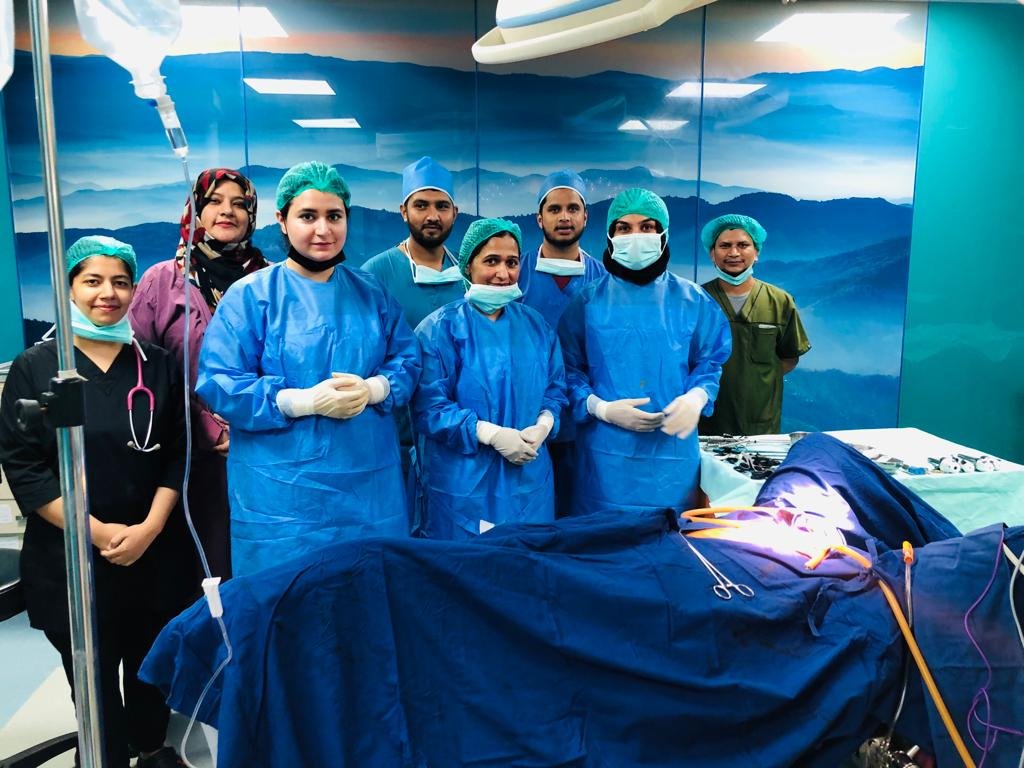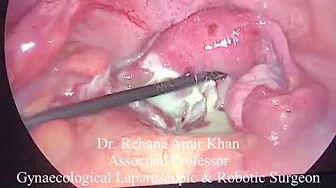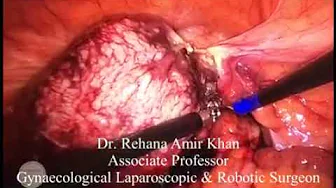Laparoscopic Gynaecological Oncological Surgeries

LAPAROSCOPIC GYNECOLOGICAL ONCOLOGICAL SURGERY
Consult the Best Gynecological Laparoscopic Surgeon in Lahore.
With years of experience in Gynecology, we are here to help
Our Specialist Gynecological Laparoscopic surgeons are specialized in all kinds of:
Did your doctor recommend you Laparoscopic Gynecological Oncological Surgery? And you don't know what is it?
Let us give you a brief introduction to Laparoscopic Gynecological Oncological Surgeries
Oncology is a branch of medicine that refers to a method of treating cancerous tumors. Its main goal is to surgically remove abnormal cancerous tumors that affect the body. Although physical removal of cancer does not always cure the disease completely, it is considered an important part of cancer treatment.
Above all, it is considered the foundation of cancer surveillance, often complemented by chemotherapy, radiation therapy, and biological therapy. This branch is increasingly distinct from general surgery as more specialized cancer treatment centers are established to deal with the increasing incidence of the disease.
Do not worry about anything, we are expert Laparoscopic Surgeons in Lahore. Truly, it is also evolving as modern, less invasive methods improve upon traditional surgical techniques.

LAPAROSCOPIC GYNECOLOGICAL ONCOLOGICAL SURGERY
Laparoscopic Gynecological Oncological Surgery
Endometrial Cancer
Laparoscopic surgery for endometrial cancer involves the removal of the uterus, cervix, tubes, ovaries, omentum, pelvic and para-aortic lymph nodes. Surgery is diagnostic (staging) and curative (80% cure). In addition to the aforementioned hysterectomy, endoscopic pelvic and para-aortic lymph node sampling and pelvic cytology were performed.
Surgical staging procedures typically include removal of uterus, both ovaries, intraperitoneal exploration, cytolysis(primary tumor), and lymphadenectomy. The laparoscopic approach is a longer procedure but involves less blood loss, shorter hospital stay, and fewer intraoperative and postoperative complications.
Cervical Cancer
Early-stage cervical cancer is surgically treated with radical abdominal hysterectomy and pelvic lymphadenectomy (RAH). The main difference between RAH and TAH is that during RAH, lymphoid tissue is removed in addition to the uterus. Moving the ureter makes the surgeon's maneuver safer.
The lymph nodes that are usually removed are the common iliac, external iliac, and internal iliac lymph nodes. Some reports of radical hysterectomy and laparoscopic lymphadenectomy combine longer operative time (even for experienced surgeons), less blood loss, fewer complications, and shorter hospital stays.
Ovarian Cancer
The incidence of diagnosed malignancy in patients with adnexal masses ranges from 0.3% to 1.2%, and the publication of case histories describing undetected laparoscopic ovarian cancer has led to criticism of such procedures. Staging of ovarian cancer includes removal of affected ovaries and fallopian tubes and pelvic and para-aortic lymph nodes.
A hysterectomy should be performed unless the patient wishes to preserve potential fertility. In addition, laparoscopy can be performed to check for possible recurrence, especially in women with ovarian cancer with moderately elevated after surgery.
LAPAROSCOPIC GYNECOLOGICAL ONCOLOGICAL SURGERY
Who should be subject to expected outcomes?
Oncology surgery refers to medical treatments needed to treat people sickened by cancerous growths. Surgery can remove malignant tumors or repair parts of the body affected by the disease. Therefore, so-called cancer surgery is classified according to the specific purpose of the surgery, including the following:
Preventive surgery
Those at high risk for cancer due to family history or pre-existing genetic conditions can have cancer prevention even if they don’t have a malignancy. This is to prevent cancer from developing in the first place. This type of tumor surgery removes tissue or organs that are sensitive to the type of cancer the body may have. For example, women with a family history of ovarian cancer may choose to have removal of ovaries even without a cancer diagnosis.
Diagnostic Surgery
Tumor surgery is also sometimes performed to confirm the presence of suspected cancer, usually by taking a small sample of the tumor so that it can be studied under a microscope. This procedure, called a biopsy, can be done using minimally invasive techniques and is the most effective way to determine whether a tumor is malignant or benign (not cancerous).
Staging the Cancer
Staging cancer may also require some surgery; this is done to determine the extent of the disease, which is an important factor in developing a treatment plan for the patient. This type of surgery assesses the size of the tumor and checks to see if lymph nodes in the body have been affected.
Initial Treatment
In many cancer cases, surgery is the primary treatment procedure with the highest chance of success, as this procedure will remove the malignant tumor from the body. If the infection is localized and has not spread to other parts of the body, surgery may be sufficient to treat the disease. Otherwise, the patient will need other treatments.
Symptom relief
Cancer surgery is also used to relieve symptoms of the disease, such as pain caused by a tumor pressing on a nerve or the tumor narrowing the bowel.
LAPAROSCOPIC GYNECOLOGICAL ONCOLOGICAL SURGERY
How does this treatment work?
Cancer surgery is performed in several possible ways using traditional or modern surgical techniques. Traditional cancer surgery removes the malignant tumor completely from the body; to do this, the surgeon must make an incision that removes not only the affected tumor but also some healthy tissue around it; this ensures that the cancer is completely removed. In some cases, the affected lymph nodes are also surgically removed.
In addition to traditional open surgery, cancer can be treated surgically using specific techniques, such as:
Laparoscopic Surgery
Laparoscopic surgery is a revolutionary surgical technique that is used today not only in cancer surgery but also in other branches of surgery. The concept of laparoscopic surgery is to use an instrument similar to an endoscope to see and perform operations inside the body without making large incisions. The large incisions of the past are being replaced by several smaller incisions through which small cameras and other surgical tools pass. Many patients choose laparoscopic surgery because it reduces pain, blood loss, damage to other organs and allows them to recover faster.
Robot-Assisted Surgery
Robot-assisted cancer surgery allows surgeons to operate under the guidance of 3D images of the affected area. The surgical instrument is then connected to the hand control, which allows the surgeon to perform the procedure by simply manipulating the control. Benefits of robot assisted surgery are more than even laparoscopic surgery and far more than open surgery.
LAPAROSCOPIC GYNECOLOGICAL ONCOLOGICAL SURGERY
Possible Complications and Risks
All surgeries have risks. Cancer surgery carries risks:
Pain
It is normal to feel pain after surgery to remove cancer. However, certain surgeries may cause more pain depending on where the cancer is, how far it has spread, and the techniques used.
Infection
As with any surgery, the site where surgery is performed is susceptible to infection, especially immediately after surgery. The doctor or oncologist caring for the patient will provide appropriate postoperative care instructions to prevent infection. If an infection develops, the patient will need antibiotics.
Blood clots
Although the risk of forming a blood clot is very small, it is present in almost all types of surgery. This serious complication usually occurs during the recovery phase and can cause a lot of pain and swelling.
Bleeding
As with any surgery, cancer surgery does carry some bleeding risks.
Your oncologist will take all necessary precautions to prevent these complications and risks. If you have any concerns before surgery, be sure to discuss them with your surgeon and oncologist.
LAPAROSCOPIC GYNECOLOGICAL ONCOLOGICAL SURGERY
Consult with the Best Oncological Gynecological Laparoscopic surgeon Today
Laparoscopic gynecological surgery has become common in current gynecological practice. As a method, it offers many benefits to patients as a minimally invasive procedure, either as a purely diagnostic procedure or as surgical treatment. Better and magnified view, better removal of cancer cells, better view of planes leading to less damage to surrounding organs, less blood loss, view of abdomen directly up to liver and upper abdomen with camera.
The only limitation in availability of laparoscopic surgery is not denial of benefits of this approach but only availability of expert surgeon in this approach.
Having years of experience in Laparoscopic Surgeries, we proudly say that nowadays, more and more traditional gynecological procedures are being replaced by laparoscopic procedures, such as tubal ligation, adjuvant surgery, and myomectomy, hysterectomy, and even gynecological cancer cases.




